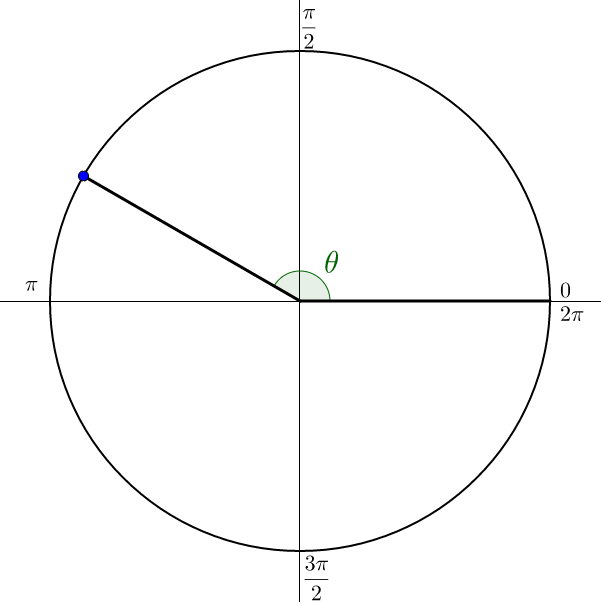Precalculus by Richard Wright
Precalculus by Richard Wright
Jesus straightened up and asked her, “Woman, where are they? Has no one condemned you?”
“No one, sir,” she said.
“Then neither do I condemn you,” Jesus declared. “Go now and leave your life of sin.” John 8:10-11 NIV
Summary: In this section, you will:
SDA NAD Content Standards (2018): PC.5.3

The London Eye is a Ferris wheel with a diameter of 394 feet. By combining the ideas of the unit circle and right triangles, the location of any capsule on the Eye can be described with trigonometry.
Lesson 4-02 looked at the unit circle. Lesson 4-03 explored right triangle trigonometry. To combine these ideas, consider a circle where r ≠ 1. Pick a point on the circle. A right triangle can be drawn to the point where one acute angle is at the point, the other acute angle is at the origin, and the right angle is on the x-axis.
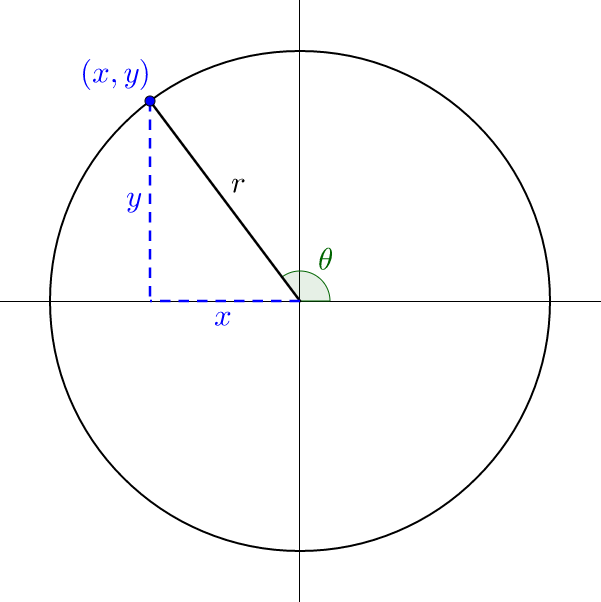
Comparing the unit circle formulas and the right triangle formulas develops the formulas for any angle. For example, consider sin θ.
Notice the last equation matches the unit circle formula with r = 1. All the unit circle formulas can be similarly modified.
where θ is an angle in standard position with point (x, y) on the terminal side and
Let (−4, 3) be a point on the terminal side of angle θ. Evaluate the six trigonometric functions of θ.
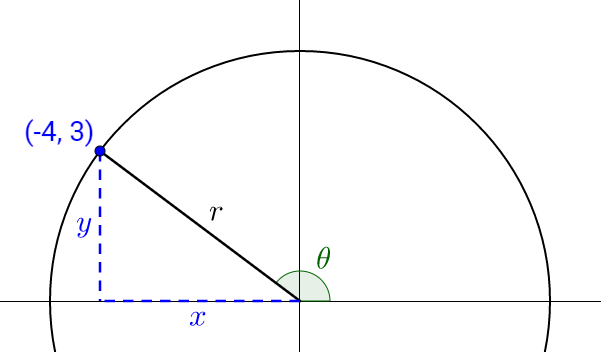
Solution
Find r.
Now use the trigonometric formulas.
If (4, −8) is a point on the terminal side of angle α in standard position, evaluate the six trigonometric functions of α.
Answers
Evaluate cos 270° and csc π.
Solution
270° and π radians terminal sides are both on an axis. Start by choosing a point on the terminal sides of the angle.
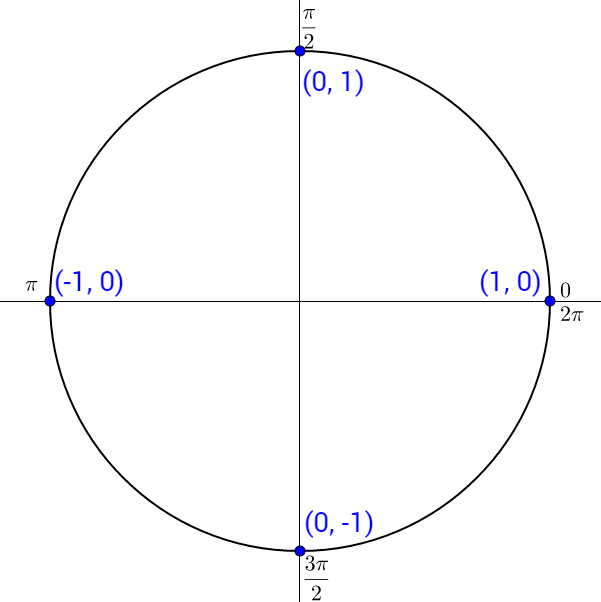
Now apply the trigonometric formulas with r = 1.
Evaluate sin 90° and cot 0.
Answer
1; undefined
By filling in the negative signs for x and y from the quadrants into the trigonometric formulas a pattern develops. For example, consider sine and cosine in quadrant II where the x is negative and y is positive.
| Since the y and r are both positive, sine is positive. | |
| Since the x is negative and r are both positive, cosine is negative. |
All the trigonometric functions' signs can be similarly determined for all four quadrants. Figure 5 shows which trigonometric functions are positive in each quadrant.
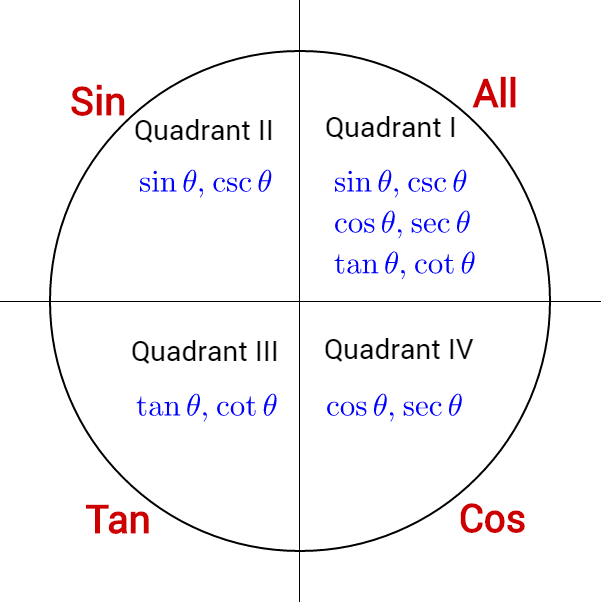
If and sin θ < 0, find tan θ and csc θ.
Solution
Since the r is always positive, r = 17 and x = −8. Use the Pythagorean Theorem to find y.
Since sin θ < 0 and , y must be negative. So, y = −15.
Now it is known that x = −8, y = −15, and r = 17. Since both x and y are negative, the angle terminates in quadrant III where tan θ and cot θ are positive. We could have also looked for a quadrant where both sin θ and cos θ were negative which is quadrant III. Now fill in the trigonometric formulas.
If and cos θ > 0, find tan θ and cos θ.
Answers
;
Since the formula from the unit circle and the right triangles give the same expressions for example 1, the acute angle by the origin in the triangle and the angle in standard position must give the same values of the trigonometric functions. Those acute angles are useful and called reference angles.
The reference angle is the angle between the terminal side of an angle in standard position and the nearest x-axis. Reference angles are always less than . The values of the trigonometric functions of the angle in standard position equal values of the trigonometric functions of the reference angle with the appropriate negative signs for the quadrant.
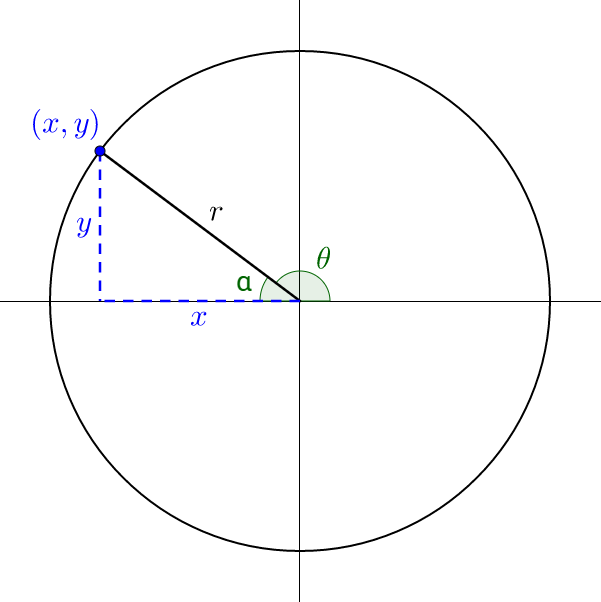
Find the reference angle for a) , b) , c) , and d) .
Solution
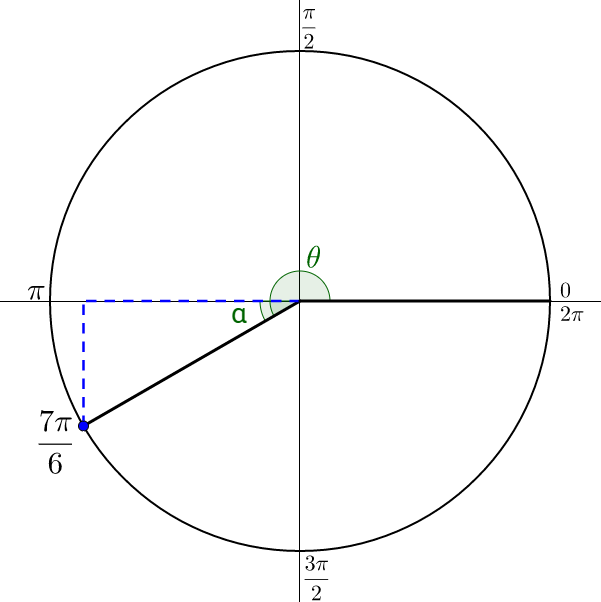
It is easiest to start by stretching a graph of the angle in standard position like in figure 7.
The x-axis angle nearest the terminal side of angle θ is π. Subtract π and to find the reference angle.
The reference angle is .
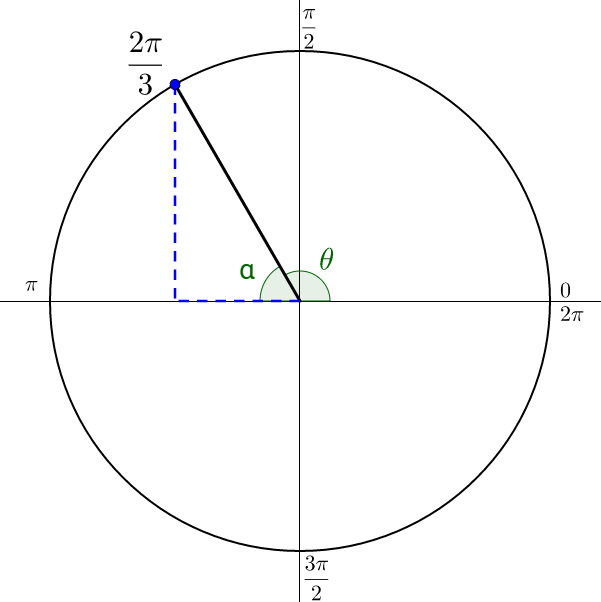
The graph of is in figure 8.
The x-axis angle nearest the terminal side of angle θ is π. Subtract π and to find the reference angle.
The reference angle is .
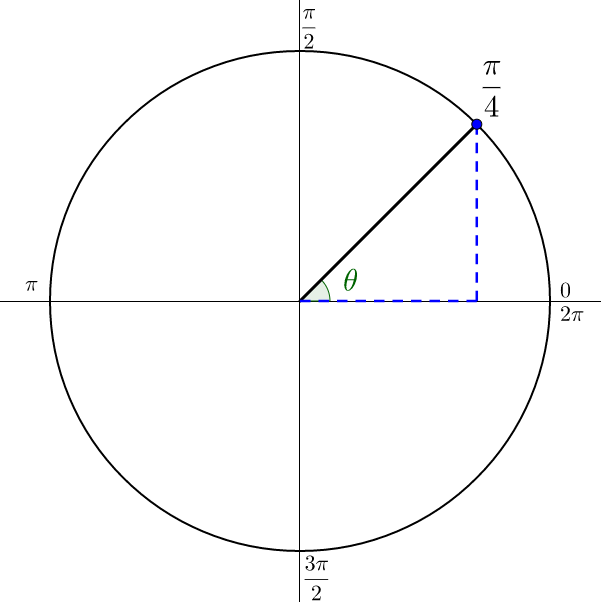
The graph of is in figure 9.
The x-axis angle nearest the terminal side of angle θ is 0. Subtract 0 and to find the reference angle.
The reference angle is .
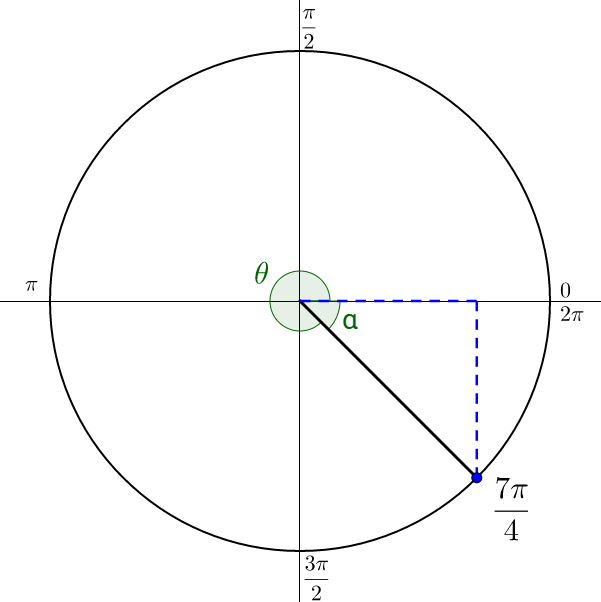
The graph of is in figure 10.
The x-axis angle nearest the terminal side of angle θ is 2π. Subtract 2π and to find the reference angle.
The reference angle is .
Find the reference angle for .
Answer
All the ideas from this lesson can be combined to evaluate trigonometric functions of any real number.
Evaluate a) , b) , c) , and d) .
Solution
is between 0 and 2π, so start by finding the reference angle. Example 4 found the reference angle of is . Evaluate the function of the reference angle using special right triangles or the unit circle.
is in quadrant III and cosine is negative in quadrant III, so .
is between 0 and 2π, so start by finding the reference angle. Example 4 found the reference angle of is . Evaluate the function of the reference angle using special right triangles or the unit circle.
is in quadrant II and sine is positive in quadrant II, so .
is not between 0 and 2π, so begin by finding a coterminal angle between 0 and 2π.
Find the reference angle. is in quadrant III and closest x-axis angle is π.
Evaluate the function of the reference angle using special right triangles or the unit circle.
which is coterminal with is in quadrant III and tangent is positive in quadrant III, so .
is not between 0 and 2π, so begin by finding a coterminal angle between 0 and 2π.
Find the reference angle. is in quadrant I and closest x-axis angle is 0.
Evaluate the function of the reference angle using special right triangles or the unit circle.
which is coterminal with is in quadrant I and sine is positive in quadrant I, so .
Evaluate .
Answer
½
If and θ terminates in quadrant IV, find tan θ.
Solution
One method to solve this problem is to sketch a right triangle in the specified quadrant with an acute angle at the origin and right angle on the x-axis. The sides of the triangle are from the given trigonometric function. Since . The r is always positive so r = 3 and y = −2. By using the Pythagorean Theorem, find x.
Since the triangle is in quadrant IV, the x value is positive and
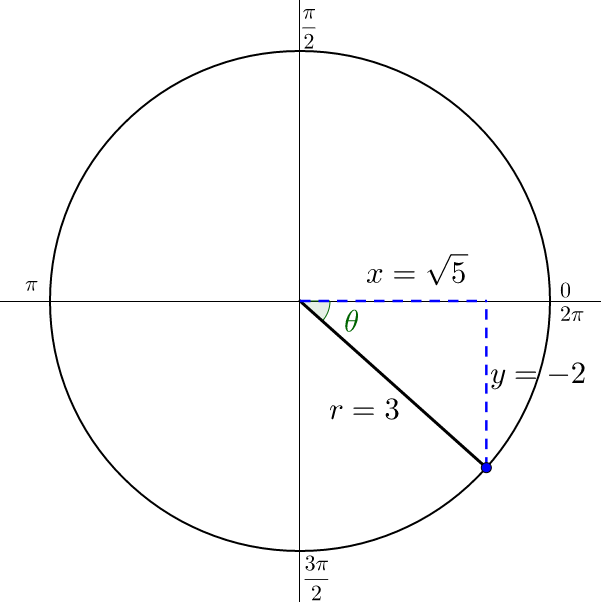
Now evaluate tan θ using the right triangle.
If tan α = −2 and α terminates in quadrant II, find sin α.
Answer
where θ is an angle in standard position with point (x, y) on the terminal side and
The reference angle is the angle between the terminal side of an angle in standard position and the nearest x-axis. Reference angles are always less than . The values of the trigonometric functions of the angle in standard position equal values of the trigonometric functions of the reference angle with the appropriate negative signs for the quadrant.

Helpful videos about this lesson.
